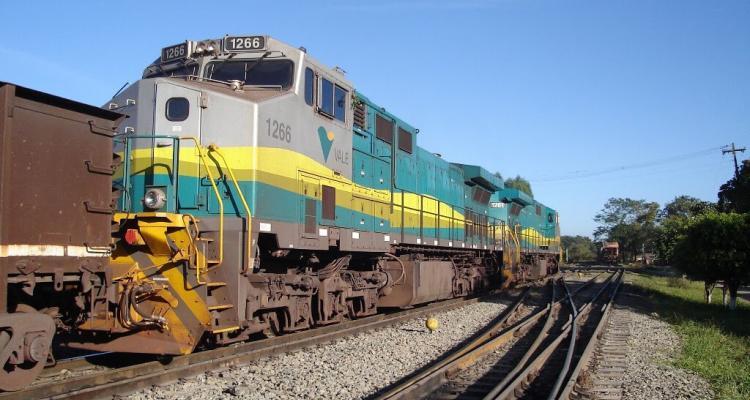
In November 2016, the first train and coaches to travel the 912km stretch between the coal fields of Tete Province in Mozambique and the new port of Nacala set off.
The railway, traversing Malawi, is an important link between the coal producing province and the closest major port.

The train’s arrival at Nacala ushered in a new era for Southern Africa Development Community (SADC).
While the port of Beira had been handling the coal shipments in the past, it was unable to deal with increased capacity, making it necessary to build a line to Malawi where it would join an existing line that needed to be upgraded.
Since then, Malawi has been upgrading its railway line with support from African Development Bank (AfDB) which provided USD300 million to upgrade infrastructure and the maintenance for the railway line to help small and medium sized businesses in the SADC region to grow.
The Nacala-Moatize railway is one of the corridors under the Regional Infrastructure Development Master Plan (RIDMP) and was delivered by a public-private partnership with the government of Mozambique.
The concept of spatial corridors and spatial development initiatives seek to facilitate the development of trade, industry, agriculture, mining, energy, tourism and other resources. These resources are inherent in the zones traversed by regional infrastructure networks such as roads and railways.
Approved in 2012 by SADC Member States, RIDMP is the blueprint for realizing the concept in practice.
For the Nacala corridor, this meant generating long-term investment returns, focusing on jobs in the region to reduce poverty, making it easier for agribusiness to grow, and contributing to more economic, social and environmental progress.
One stretch of the existing railway line had a speed limit of 10km per hour.
After the refurbishment, trains can now run at up to 60km per hour there.
Through such improvements, coal can now be transported from Moatize to Nacala in half the time it took previously.
Corridor manager Sara Taibo said the success of the Maputo Development Corridor, linking Mozambique’s capital to South Africa, helped secure funds for similar projects.
“It was on the basis of the Maputo corridor success story that the same concept was replicated for the Beira and Nacala corridors, and subsequently to Zambezia with the intention of transporting coal from Moatize.
“It is intended that these corridors not be limited to handling coal, but also to handle other cargo and goods coming from neighbouring countries,” said Taibo.
She added that the corridor will be able to carry more than 20 million tonnes of coal in a year to be delivered in Americas, Eastern Asia, Europe and India, among others.
“Right now we’re sitting at a capacity of 18 million tonnes of coal per annum and four million tonnes capacity for general cargo.
“This year, it is expected to handle 2.1 million tonnes and 85 000 of containerized cargo, from the 631 thousand tonnes handled through the route in 2016,” added Taibo.
Taibo added further with expression on the construction challenge faced when the new track had to be laid between Moatize in Mozambique and connect with the existing railway line near Liwonde in Southern Malawi.
The project has witnessed many people in countries like Malawi and Mozambique getting employment.
Fifty-year-old plumber Hillgud Kukhala from Mozambique was one of the construction workers employed to work on parts of the railway.
“I am now a proud owner of a beautiful house that I built with my own money something I never dreamt would happen in my lifetime,” says Kukhala.
Besides the house, he now owns a herd of livestock and supports his widowed mother with monthly remittances.
The project has since surpassed the benefit of faster rail transport and construction jobs, as ICT companies get tender in installing devices used in the upgraded systems of the corridor.
SADC Protocol on Transport, Communications and Meteorology is aimed at establishing transport, communications and meteorology systems which provide efficient, cost-effective and fully integrated infrastructure and operations, which best meet the needs of customers and promotes economic and social development while being environmentally and economically sustainable.
The RIDMP was instituted after SADC realized that goods moving from landlocked SADC countries would increase from 13 million tonnes in 2009 to 50 million tonnes by 2030 and 148 million by 2040, at an average annual growth rate of 8.2 percent.
The total port traffic in Southern Africa will jump from 92 million tonnes in 2009 to 500 million tonnes by 2027.
The RIDMP transport and corridor upgrades will cost USD100 billion over fifteen years. Among others, the upgrades seek to have secondary ports to boost the 30-50 percent transit cargo handled in the region by easing a cargo delay problem due to poor road, rail and port facilities, and slow clearances by regulatory agencies.
Bolstering the region’s infrastructure by expanding and making better use of existing deep-water ports such as Nacala and Walvis Bay are important contributing factors to support the further developments of the SADC economy that Malawi is under.














